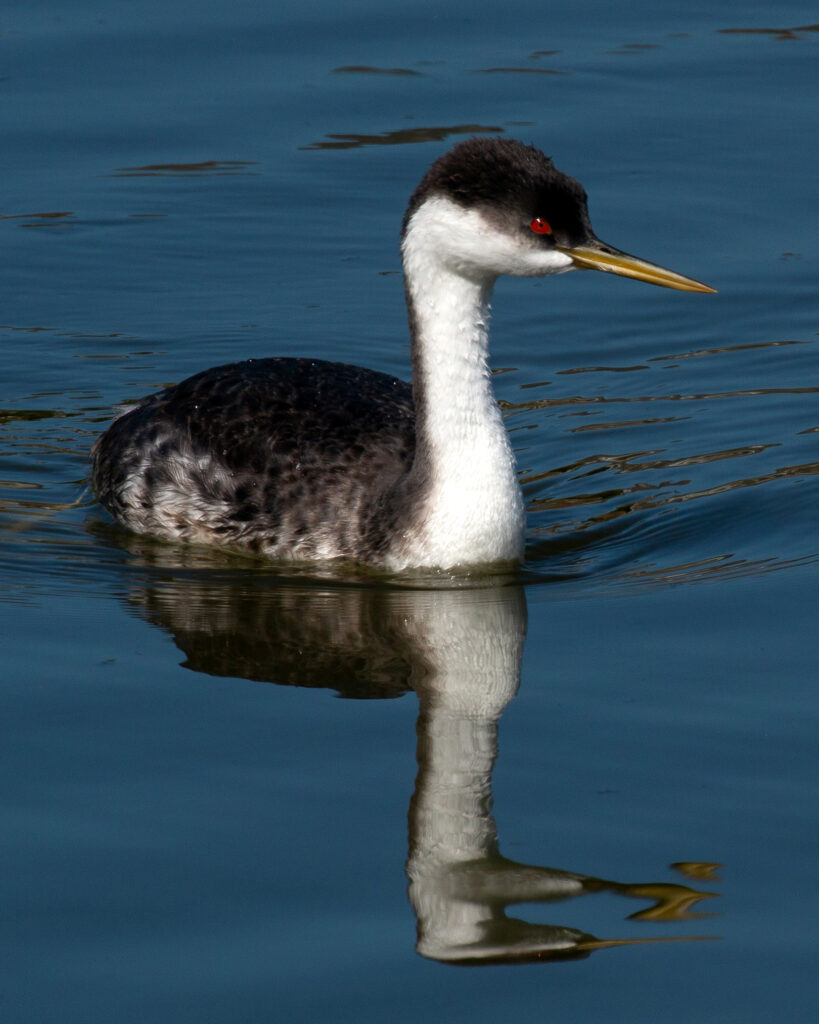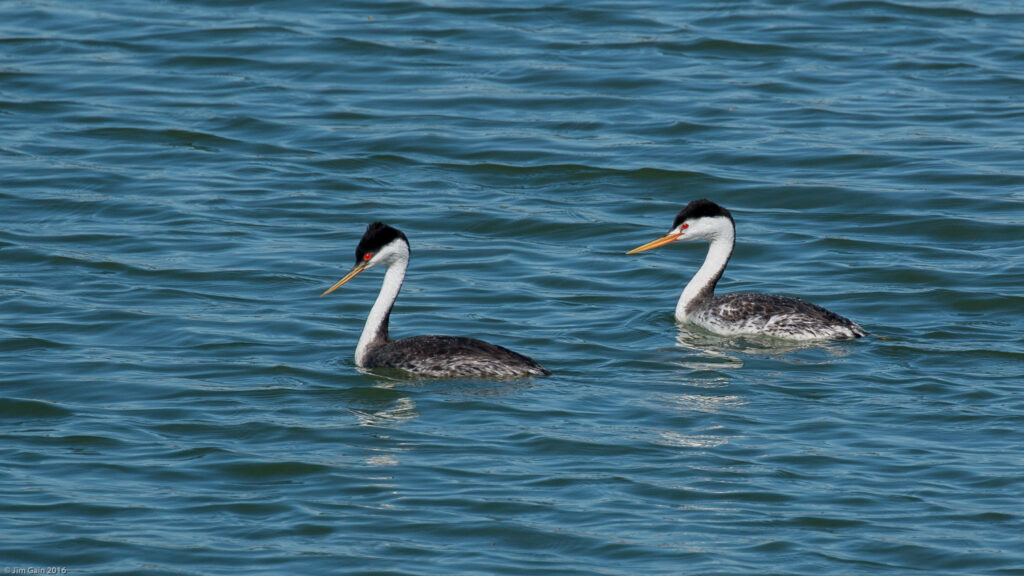We’re proud to publish Jim Gain’s series, “Learn 100 Common Valley Birds.” Below, Jim’s beautiful photos help distinguish between the common Western Grebe and the less seen Clark’s Grebe. Both can be found on bodies of water throughout the Valley. ed
Few things on earth fill us with as much delight as birds, and knowing them by name only adds to our pleasure. In California’s San Joaquin Valley, with a little bit of effort, anyone can learn 100 local bird species. Especially since Valley residents routinely come in contact with at least a dozen species that most recognize but may not know by name, learning the common birds can be a gradual and gratifying process. The intent of this series is for followers to learn about and be able to identify 100 common valley birds. A Reflections of the Natural World blog post series by Jim Gain.

Western Grebe – Aechmophorus occidentalis
Name Roots: (Gr. aichme, “spear”; phoreus, “bearer” – L. occidentalis, “western”)
Physical Characteristics
The Western Grebe is the largest among North American grebes. It has a slender body with crisp black-and-white plumage, a yellow bill, and a red eye. Its long neck is nearly twice the length of its body and is composed of 17–21 vertebrae. The feet of the Western Grebe are flattened, which lessens resistance and aids in propulsion during swimming and diving. It differs slightly from the less common Clark’s Grebe in that the black cap covers the eye and extends to the bill. Its eye is surrounded by black feathering.

An interesting fact about the Western Grebe is that it is renowned for its ballet-like courtship display in which the male and female “run” across the water in synchrony. This dance is known to be one of the most elaborate among water bird species.
Distribution Status in the Valley
The Western Grebe is a fairly common year-round resident in the Valley and can be found in almost any area with open water.

